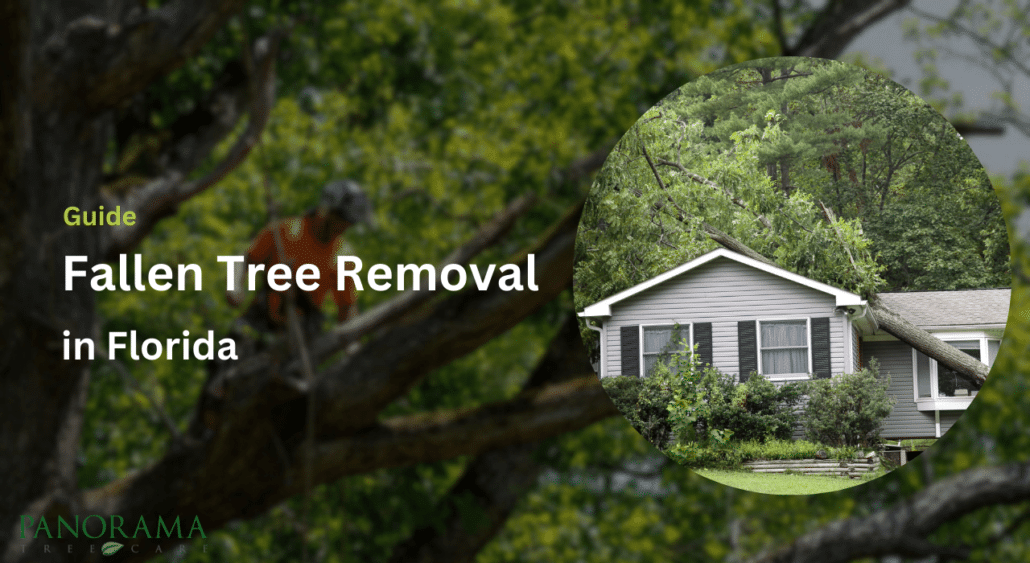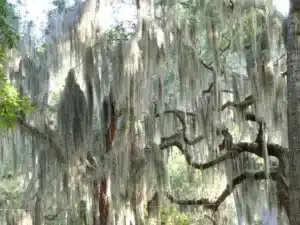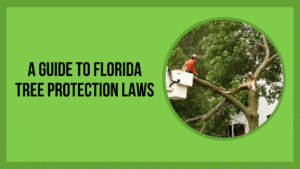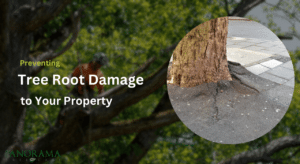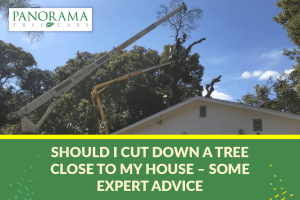When a tree falls, whether due to a storm, age, or other factors, it can pose a significant hazard and create legal liabilities if not properly addressed.
In Florida, the responsibility for fallen tree removal varies depending on where the tree is located and the circumstances surrounding the incident.
Understanding these responsibilities is crucial for ensuring safety and compliance with local regulations.
If you’re dealing with fallen or hazardous trees, our emergency tree service Tampa team is here to respond quickly and safely.
Fallen Trees on Private Property
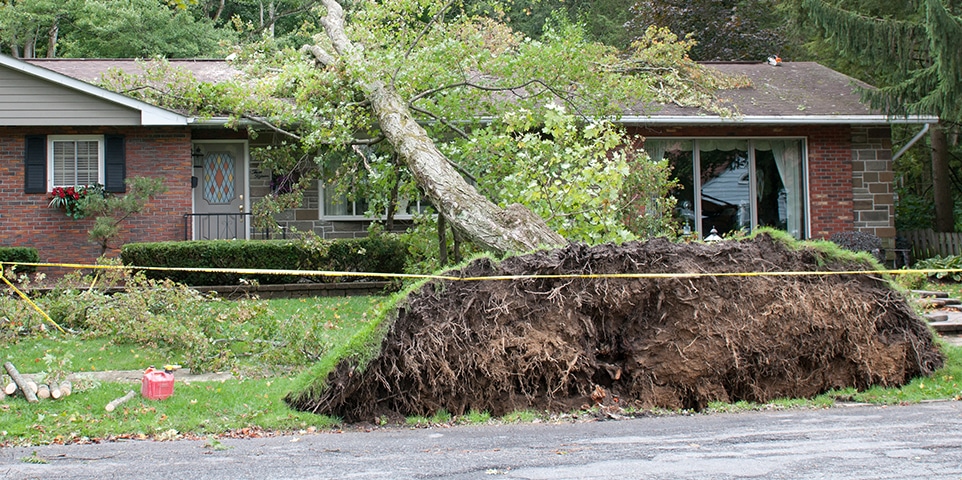
When a tree falls on your property in Florida, it’s your responsibility to handle the situation promptly and effectively.
This means taking steps to ensure the safety of anyone on your property and preventing additional damage to structures or surrounding areas.
However, there are exceptions to this rule, particularly if the fallen tree originates from a neighboring property.
In such cases, liability for the tree and any resulting damage may shift to the owner of the property where the tree originally stood. It’s essential to understand the legal nuances in these situations to determine the appropriate course of action.
One crucial step in managing a fallen tree on your property is to contact your insurance company as soon as possible.
Your homeowner’s insurance policy may provide coverage for the cost of tree removal and any damages caused by the fallen tree, depending on the specifics of your coverage.
By notifying your insurance provider promptly, you can initiate the claims process and potentially receive financial assistance for addressing the issue.
While insurance coverage can help offset the costs associated with fallen tree removal, it’s often advisable to hire professional tree removal services.
These professionals have the expertise, experience, and specialized equipment needed to safely and efficiently remove the fallen tree without causing further damage to your property or endangering anyone involved in the process.
Fallen Trees on Public Property
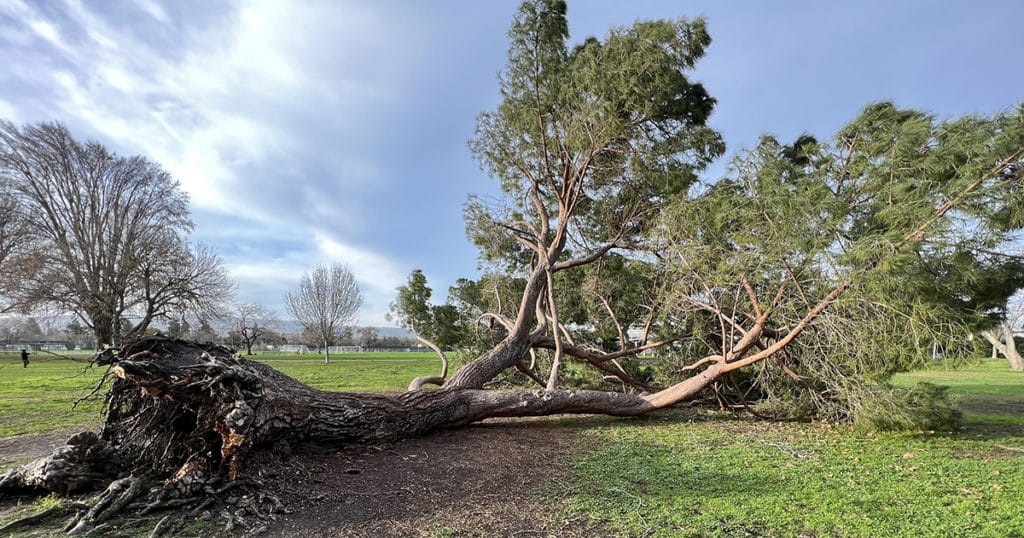
When a tree falls on public property such as streets, parks, or other communal areas in Florida, it becomes the responsibility of the local municipality to address the situation.
This means that city or county authorities are tasked with removing the fallen tree and ensuring the safety of residents and visitors.
Reporting procedures for fallen trees on public property may vary depending on the specific municipality.
However, in most cases, it’s essential to notify the relevant authorities as soon as possible.
This can typically be done by contacting the local public works department, parks and recreation department, or other designated agencies responsible for managing public spaces.
The prompt reporting of fallen trees is crucial to facilitate a swift response from municipal authorities.
By alerting them to the issue, they can assess the situation and take appropriate action to remove the tree and mitigate any potential hazards it may pose to public safety.
Once a fallen tree is reported, prioritization for removal is determined based on various factors.
These factors may include the location of the tree, such as whether it’s obstructing a roadway or posing a danger to pedestrians, as well as the extent of the hazard it presents.
Trees blocking major thoroughfares or posing immediate safety risks are typically prioritized for removal over those in less critical areas.
Local authorities may also consider other factors such as the availability of resources and personnel when prioritizing fallen tree removal.
During times of high demand, such as following severe weather events, response times may vary as municipalities work to address multiple incidents simultaneously.
Fallen Trees Blocking Roads
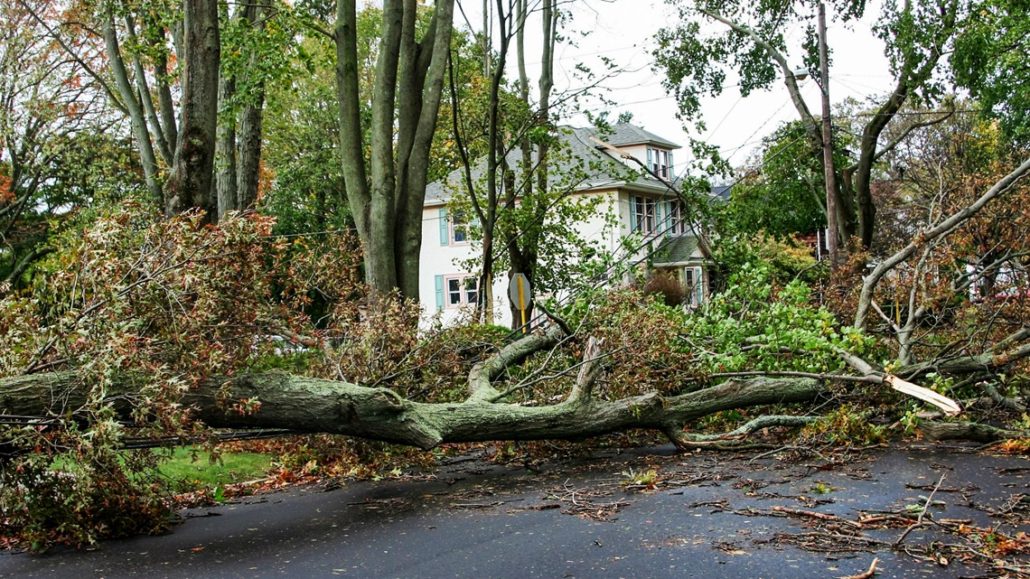
When a tree falls and blocks a road in Florida, it can create a hazardous situation for drivers, pedestrians, and nearby residents.
In such instances, local authorities and emergency services are responsible for managing the incident and ensuring public safety.
Attempting to remove a fallen tree blocking a road independently can be extremely dangerous.
Without the proper equipment, training, and expertise, individuals risk causing further damage or injury to themselves and others.
Therefore, it’s essential to refrain from taking matters into your own hands and instead rely on trained professionals to handle the situation safely and effectively.
The first step when encountering a road blocked by a fallen tree is to promptly report the incident to the appropriate authorities.
This typically involves contacting local law enforcement, the public works department, or emergency services, depending on the severity of the obstruction and potential hazards involved.
Providing detailed information about the location and size of the fallen tree can help authorities assess the situation and prioritize their response.
Understanding the expected response times for fallen tree incidents can help manage expectations during such emergencies.
While authorities strive to address road blockages as quickly as possible, response times may vary depending on factors such as the severity of the obstruction, the availability of resources, and the extent of other ongoing emergencies in the area.
During periods of high demand, such as after severe weather events or during peak traffic times, response times may be longer than usual. It’s essential for residents to remain patient and cooperate with authorities as they work to resolve the situation and reopen the affected roadways.
After a Natural Disaster
After a natural disaster strikes, such as a hurricane, tornado, or severe storm, the aftermath often includes fallen trees that need to be addressed promptly and safely.
In Florida, where hurricanes are a common occurrence, understanding the special guidelines for fallen tree removal is crucial for residents and communities.
State and federal agencies may provide assistance in the aftermath of widespread disasters.
These agencies may offer resources, manpower, and expertise to help communities cope with the extensive damage caused by the natural disaster.
Residents should stay informed about any assistance programs or initiatives available to them and follow the guidelines provided by these agencies.
Safety precautions become even more critical during post-disaster cleanup efforts. The aftermath of a natural disaster can present various hazards, including unstable structures, downed power lines, and debris-filled areas.
When dealing with fallen trees, individuals should exercise caution to avoid injury or further damage.
It’s essential to prioritize safety by wearing appropriate personal protective equipment, such as gloves, sturdy footwear, and eye protection, when engaging in post-disaster cleanup activities.
Additionally, individuals should be mindful of potential hazards, such as hidden obstacles or unstable tree limbs, and proceed with caution to minimize risks.
Depending on the extent of the damage and the resources available, communities may implement coordinated cleanup efforts to remove fallen trees and debris from public areas and roadways.
Residents should follow any directives or instructions provided by local authorities and cooperate with emergency responders and cleanup crews to ensure a swift and safe recovery process.
Legal Considerations
When it comes to tree removal in Florida, there are important legal considerations that homeowners and property owners need to be aware of to avoid potential liabilities and legal issues. Failure to comply with these legal requirements can result in fines, penalties, or even legal disputes.
One crucial aspect of legal considerations for tree removal is obtaining any necessary permits or approvals.
In certain situations, especially when dealing with protected or heritage trees, property owners may be required to obtain permits from local authorities before removing a tree.
These permits ensure that the tree removal complies with environmental regulations and conservation efforts aimed at preserving important or endangered tree species.
Protected trees may include those designated as part of a conservation area, historic site, or protected wildlife habitat.
Heritage trees, on the other hand, are typically older trees with cultural or historical significance. Removing such trees without proper authorization can lead to significant legal consequences.
Additionally, local ordinances and regulations govern tree removal in many municipalities across Florida.
These regulations may impose restrictions on the removal of trees based on factors such as size, species, or location.
Property owners are typically required to familiarize themselves with these regulations and obtain any necessary permits or approvals before proceeding with tree removal.
Complying with legal requirements for tree removal not only helps avoid potential fines or legal disputes but also contributes to environmental conservation efforts and the preservation of Florida’s natural heritage.
By following the proper procedures and obtaining the necessary permits, property owners can ensure that their tree removal activities are conducted responsibly and in accordance with applicable laws and regulations.
Hiring Professional Tree Removal Services
Hiring a professional tree removal company is a crucial step in ensuring the safe and efficient removal of trees from your property.
Opting for licensed and insured professionals—like our emergency tree removal in Tampa Bay experts—offers several advantages over attempting to remove trees yourself or hiring unqualified individuals.
First and foremost, licensed and insured tree removal professionals have the necessary expertise to assess the situation and determine the most appropriate course of action.
They are trained in the proper techniques for tree removal, including safely cutting down trees, dismantling them in sections if necessary, and ensuring that debris is removed and disposed of properly.
Additionally, these professionals have access to specialized equipment and tools designed specifically for tree removal tasks.
From chainsaws and wood chippers to cranes and bucket trucks, they have the resources needed to tackle even the most challenging tree removal jobs safely and efficiently.
When selecting a tree removal service provider, it’s essential to consider several factors to ensure you’re hiring a reputable and reliable company.
Experience is one critical factor to consider. Look for a company with a proven track record of successfully completing tree removal projects similar to yours.
Reading reviews and testimonials from past clients can also provide valuable insight into the quality of service you can expect.
Reputation is another crucial consideration. Choose a tree removal company with a reputation for professionalism, reliability, and customer satisfaction.
You can research a company’s reputation by checking online reviews, asking for recommendations from friends or neighbors, or contacting local business organizations for referrals.
Finally, pricing transparency is essential when hiring a tree removal service provider. A reputable company will provide you with a clear and detailed estimate of the cost of the project upfront, including any additional fees or charges that may apply.
Avoid companies that provide vague or ambiguous pricing information, as this can lead to unexpected expenses down the line.
Conclusion
Fallen tree removal in Florida involves a range of responsibilities and considerations, depending on where the tree is located and the circumstances surrounding its fall.
Homeowners, local authorities, and professional tree removal services all play a role in ensuring safe and legal tree removal practices.
If you’re unsure about your responsibilities or the appropriate course of action, it’s always advisable to seek guidance from local authorities or consult with professional tree removal experts. For more information or to schedule a consultation, feel free to contact us.

